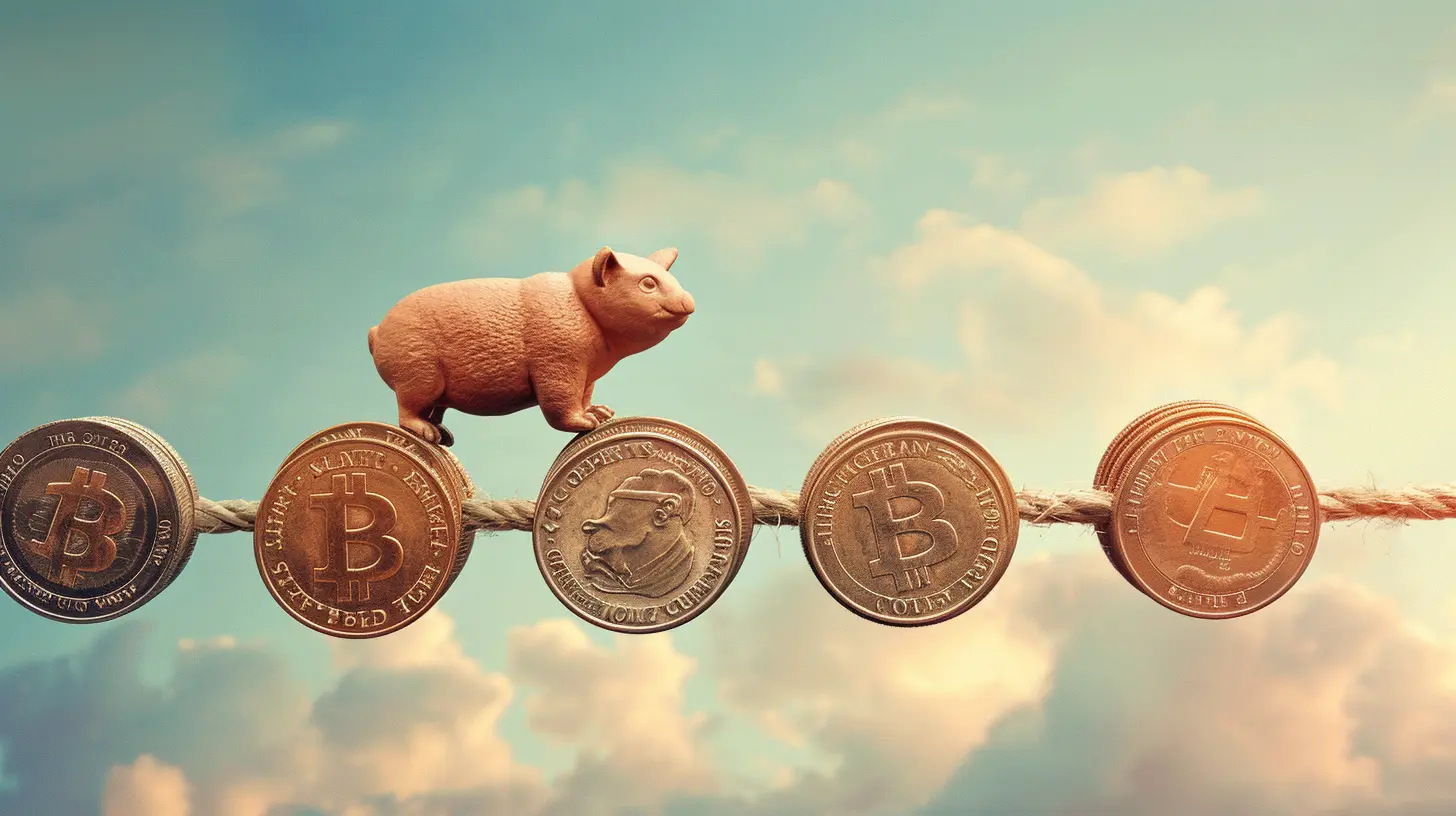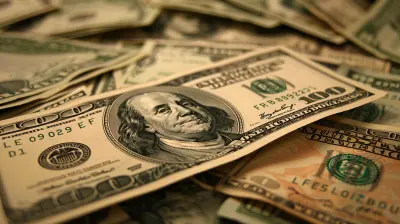The Link Between Interest Rates and the Corporate Earnings Outlook
10 June 2025
Let me tell you a story.
Imagine the economy as an intricate symphony. Every note, every pause, every crescendo plays a part. Now, picture interest rates as the conductor—waving the baton, setting the tempo, controlling the mood. And corporate earnings? They’re the melody, the harmony that follows the rhythm set by those rates.
When the tempo quickens—interest rates rise—corporate profits often falter. When the beat slows—rates fall—companies can breathe, stretch, grow. You see, the link between interest rates and the corporate earnings outlook isn’t just financial jargon. It’s the heartbeat of the business world.
So let’s pull up a chair, pour ourselves a cup of coffee, and dig into this mesmerizing connection.
🎼 The Basics: What Are Interest Rates, Anyway?
Before we dive deep, let’s get our definitions straight.Interest rates are essentially the cost of borrowing money. They’re set by central banks, like the Federal Reserve in the U.S., and they ripple out across the globe. Think of them as the price tag for using someone else’s cash.
They influence everything—from your credit card payments to the housing market. But for businesses? Interest rates can be the wind beneath their wings or the storm that grounds their flight.
💼 The Bigger Picture: How Companies Make (And Lose) Money
To understand corporate earnings, think of a company’s income like your own paycheck.They’ve got money coming in—sales, services, maybe even rent from properties—and money going out—wages, material costs, rent, interest on loans. After paying all expenses, what’s left is the profit, or "earnings."
Now, here’s the plot twist: what affects those earnings? Yep, you guessed it—interest rates.
🎢 Rising Rates: The Corporate Tightrope
When interest rates rise, it’s like turning up the gravity in a video game.The cost of borrowing goes up. That means companies with debt—especially the big ones with massive loans—have to shell out more in interest payments. Less money to reinvest, less money for innovation, and definitely less money flowing down to the shareholders.
Not only that, but consumers may slow their spending. Higher rates mean pricier mortgages, car loans, and credit card balances. When people tighten their belts, sales dip. And when sales dip, guess what? Corporate earnings suffer.
Imagine trying to run up the escalator in the opposite direction. That’s what companies feel when interest rates climb.
🪂 Falling Rates: A Breath of Fresh Air for Earnings
Now flip the script.When interest rates drop, it’s like lifting a weight off a business’s chest. Borrowing becomes cheaper. Expansion plans come off the shelves. Maybe a new factory gets built. Maybe more staff are hired. Maybe they launch that new product that’s been on the back burner.
Consumers feel the boost too. Lower loan payments free up cash, which often makes its way back into the economy via spending. And yes, higher consumer spending usually leads to stronger corporate earnings.
It’s no surprise that stock markets often rally when central banks cut rates. Investors can almost hear the ka-ching echoing from boardrooms.
⏳ Timing is Everything: Lag Effects and the Patience Game
Here’s the quirky thing about interest rates—they’re not instant coffee. They take their sweet time.When a central bank raises or cuts rates, the effects don’t show up overnight on a company’s balance sheet. It’s more like planting a seed and waiting for it to sprout. Sometimes it takes months. Sometimes even longer.
So while investors and analysts jump at rate announcements, savvy ones know that the true impact on corporate earnings might not be visible for at least two or even four quarters down the line.
🧠 The Psychological Impact: Investor Sentiment and Market Vibes
Let’s not forget the power of belief.Even the expectation of rising or falling rates can move markets. Investor sentiment swings wildly based on economic forecasts. If the mood turns cautious, stock prices dip—reflecting lower confidence in future earnings.
On the flip side, optimism around falling rates or a supportive monetary policy can give markets a full-body buzz. Earnings might not have improved yet, but belief alone can fuel a rally.
You ever feel more confident just because the sun is shining? Same thing here. It’s not just the numbers; it’s the vibes.
🧾 Debt Levels Matter: Not All Companies Are Created Equal
Companies don’t all wear the same shoes. Some are light on debt—barefoot and agile. Others are carrying around iron boots, weighed down by billions in corporate bonds, loans, and liabilities.For debt-heavy companies, a 1% rise in interest rates is like a gut punch. Refinancing becomes painful. Margins shrink. Investors get antsy.
But lean companies? They cruise through rate hikes with barely a scratch. Sometimes, they even thrive while others flounder. It’s one reason why investors closely examine balance sheets when interest rate shifts are in play.
🇺🇸 Fed Decisions: Wall Street’s Crystal Ball
In the United States, all eyes usually turn to one building: The Federal Reserve.The Fed’s decisions on interest rates are dissected like ancient scrolls. Analysts study the wording of their policy statements. A single phrase can send stocks soaring—or plummeting.
That’s because when the Fed hikes rates, it’s often to cool down inflation. While controlling inflation is important, it sometimes comes at the cost of corporate growth. It’s the finance version of tough love.
Conversely, when the Fed cuts rates, it's usually a move to stimulate growth. Businesses and consumers alike get a jolt of confidence—and often, that shows up on corporate earnings reports in the following quarters.
🌐 Global Context: It’s Not Just About the U.S.
This relationship between interest rates and corporate earnings isn’t uniquely American.Central banks across Europe, Asia, and other regions play by similar rules. And thanks to globalization, the ripple effects cross borders fast. A European rate hike can weaken the Euro, affecting multinational earnings. An Asian rate cut can spur demand for American exports.
Investors need a wide-angle lens. Local interest rates directly impact domestic companies, while global shifts can twist the earnings outlook in ways that are harder to predict.
⚖️ Balancing Act: Inflation, Growth, and Earnings
One of the biggest reasons interest rates move is to tame inflation. But here’s the catch—too much inflation? It crushes purchasing power. Too little inflation? It signals weak demand.The central bank’s job is to walk a tightrope—raise rates fast enough to manage inflation, but not so fast that it chokes off growth.
Corporate profits are like the person balancing on that rope. Wobble too far in either direction, and earnings take a hit. It’s a delicate dance. Unsteady footing, and down comes the outlook.
🧮 Real-World Examples: The Proof is in the Pudding
Let’s bring this theory to life.Example 1: Tech Titans and Rate Hikes
When interest rates started rising in 2022, tech companies—many of which rely on future earnings—got slammed. Why? Because those future profits are worth less today when rates are higher. Investors re-priced their expectations, and Nasdaq felt the sting.Example 2: Rate Cuts and the Retail Rebound
During the pandemic, central banks slashed rates. Retailers like Target and Walmart saw a surge in consumer spending. Low interest payments, plus high demand, turbocharged their earnings for several quarters.Numbers don’t lie. Rates move, companies react, and earnings tell the tale.
📊 Investing Implications: What Should You Watch?
If you're an investor—or just interested in finance—tracking interest rates is like tracking the moon in the night sky. It doesn’t change the stars, but it changes how brightly they shine.- Watch the Fed (or your local central bank)
- Read earnings reports carefully—and look for interest-related costs
- Track debt levels in your portfolio companies
- Stay tuned to inflation and consumer confidence
The more you understand the rhythm, the better you can dance with the market.
🧭 The Takeaway: A Financial Compass for the Future
So, what have we learned?Interest rates aren’t just numbers on a screen. They’re the pulse. The beat behind every business decision. The invisible hand guiding corporate fates.
When rates rise, caution creeps in. When they fall, opportunity knocks. Whether you’re a CEO making decisions or an investor watching from the sidelines, understanding the link between interest rates and the corporate earnings outlook is essential.
It’s not about predicting the next move—it’s about staying in sync with the music.
So next time you see a headline about interest rates, don’t gloss over it. Read it like a verse in your favorite song. Because in the grand performance of finance, interest rates lead—and corporate earnings follow.
all images in this post were generated using AI tools
Category:
Interest Rates ImpactAuthor:

Yasmin McGee
Discussion
rate this article
2 comments
Selah McAleer
This article provides valuable insights into how interest rates influence corporate earnings. The clear examples and analysis help clarify the complex relationship. I’d love to see further exploration of regional differences in interest rate impacts on various industries in future posts.
June 15, 2025 at 11:56 AM

Yasmin McGee
Thank you for your thoughtful feedback! I'm glad you found the insights helpful. Exploring regional differences in interest rate impacts on industries is a great idea for future posts. Stay tuned!
Tabitha Klein
This article effectively highlights the critical relationship between interest rates and corporate earnings. Understanding this link is essential for investors, as it shapes market expectations and influences strategic business decisions moving forward.
June 13, 2025 at 4:34 AM

Yasmin McGee
Thank you for your insightful comment! I’m glad you found the connection between interest rates and corporate earnings meaningful for investors and strategic decision-making.


